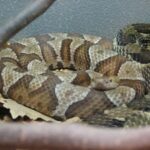Many have heard of the infamous Black Widow Spider, but you may not be aware of her sister species the Brown Widow Spider. These spiders are most commonly found in Florida, however, sightings ave been reported in Southern California, Colorado, Texas, Arkansas, Mississippi, Alabama, Georgia, and South Carolina as well. The reasoning for the spread across America is most likely due to transportation in vehicles. There have been many complaints of finding this spider in cars and RVs.
These spiders will vary from a light tan to dark brown, sometimes almost mistaken for a black shade which can confuse people of this spider with the Black Widow. The under side of the spiders abdomen is where you can find the infamous widows hour glass marking. Unlike the Black Widow, the marking of the Brown Widow are orange to a yellow-orange.
Another distinct way to tell the Brown Widow apart from it’s sister species is the egg sac. Instead of having a smooth surface, the sac is covered in pointed spike resembling features. It has been described as “fluffy” looking.
Brown Widows tend to build their webs in secluded areas around homes, most often very close to where we dwell in our daily routines. Some of the most common areas you would find a Brown Widow consist of empty containers, mail boxes, entry way corners, stacked equipment, cluttered storage, closets, garages, garbage cans, outside chairs, and underneath mobile homes.
Although when most hear the name of any widow spider, fear strikes many. However, widow spiders are generally not very aggressive and will retreat when disturbed. Bites typically occur when the spider becomes accidentally pushed against your skin or if a person places their hands in dark areas where a widow is. The Brown Widow is very timid and will do not tend to protect their webs. They will scurry away to a new location.
The venom in a Brown Widow spider is more potent tan a Black Widows, however, they release much less venom causing the bite to appear less severe. Their venom is a neurotoxin, which means it will not cause local tissue death to the skin. A common symptom that might occur with a bite are muscle spasm which can mimic the pain of a severe abdominal problem.
When the bite first occurs it can be very painful, but surprisingly can go unnoticed. You may find two red bite wounds to the surface of the skin. Blistering may also follow a bite which can take a cyst-like appearance. It has been reported that the worst pain happens in the first 8-12 hours and symptoms can occur for several days.
Any children, pregnant women, elderly, and those with hypertension should be taken to the hospital immediately. It is always best if possible to trap the spider inside of a plastic container to be brought with you to confirm the species. Anti-venoms are available so do not wait until the problem grows.
Some treatment methods you could use prior to visitation of a doctor are:
Clean the bitten area.
Apply ice to the affected area to numb the pain and swelling.
Take a pain medication, such as a muscle relaxant if available.
To help prevent a Brown Widow from inhabiting your home routine cleaning is a must. Gloves should always be worn if you suspect there may be widows present. Using a vacuum cleaner is a great way to reduce risk of bites, I would not recommend using a bagless. Be sure to empty the vacuum bag after cleaning, disposing of it outside of your home. All cracks and holes or spaces around your windows and doors should be filled or fitted for weather stripping. Another alternative is to use insecticides. Be sure to have good ventilation if spraying inside of your household. Perimeter sprays will be a temporary fix, but do not last long due to sun exposure.
Be sure to take the proper steps to keeping your household safe and healthy.









